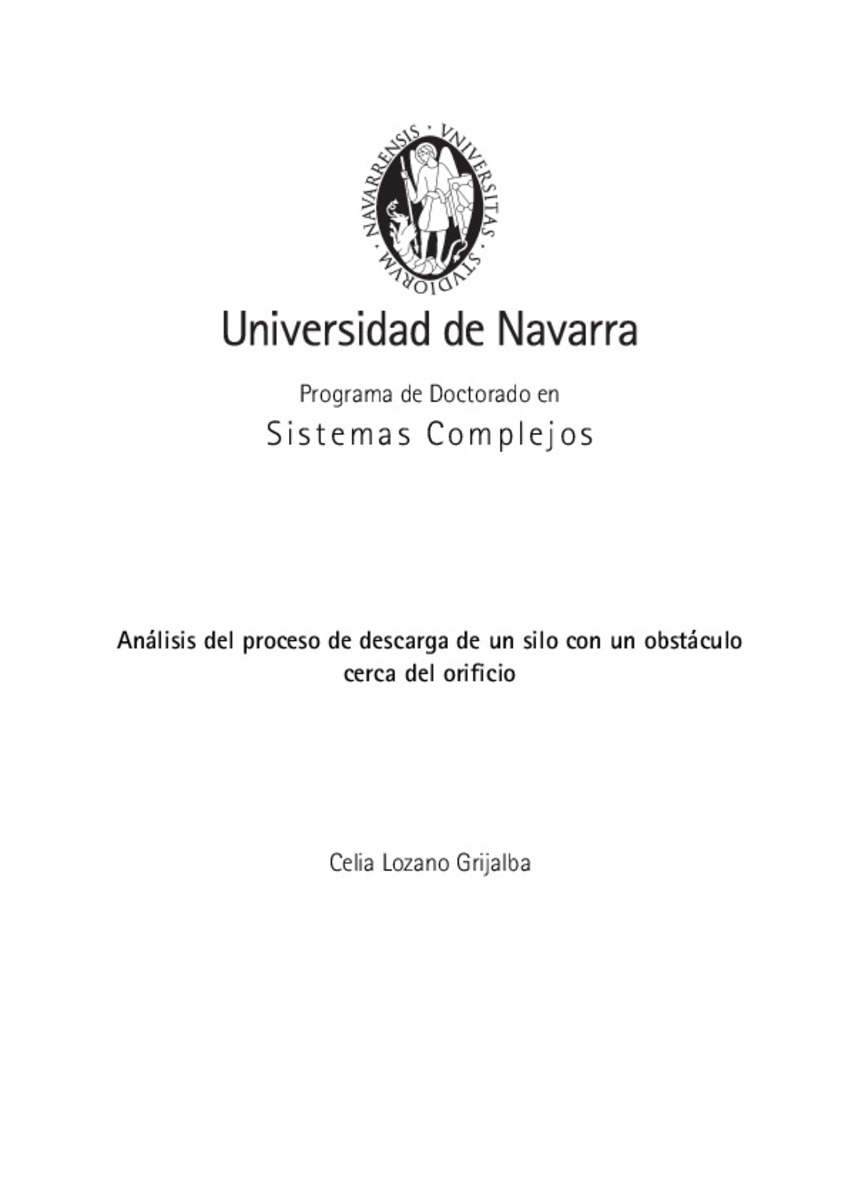Full metadata record
| DC Field | Value | Language |
|---|---|---|
| dc.contributor.advisor | Zuriguel-Ballaz, I. (Iker) | - |
| dc.creator | Lozano, C. (Celia) | - |
| dc.date.accessioned | 2012-11-02T13:25:06Z | - |
| dc.date.available | 2012-11-02T13:25:06Z | - |
| dc.date.issued | 2012 | - |
| dc.date.submitted | 2012-09-21 | - |
| dc.identifier.citation | LOZANO GRIJALBA, Celia. “Análisis del proceso de descarga de un silo con un obstáculo cerca del orificio”. Zuriguel Ballaz, Iker. Tesina. Universidad de Navarra, Pamplona, 2012 | es_ES |
| dc.identifier.isbn | 978-84-8081-300-6 | - |
| dc.identifier.uri | https://hdl.handle.net/10171/23618 | - |
| dc.description.abstract | Jamming is an important problem in numerous industrial processes, and in other situation such as traffic and evacuation. Some reports show that an obstacle placed before the exit may prevent jamming a pedestrian flow. However, this is a general hypothesis and there are still related questions that have not been fully addressed, mainly the dynamics of the system or the optimal position of the obstacle. The present work aims at shedding some more light on these phenomena. We present an experimental work where we analyze systematically and under well controlled conditions, the macroscopic and microscopic processes involved during the discharge of a silo by gravity with an obstacle placed before an orifice. We fixed at the size of the orifice and change the position of the insert. In order to do that, we have designed a 2D silo with transparent walls which allowed visualization of the particles. The first conclusion of this work is the existence of an optimal position of the obstacle where the jamming probability is drastically reduced. If the obstacle is far away from the orifice, it does not have any effect. When the obstacle is close to the orifice, the avalanche size is higher and the probability that a particle clogs the outlet decreases. We find that, if the insert position is properly selected, the probability that the granular flow gets jammed can be decreased by a factor of 100. This dramatic effect occurs without any remarkable modification of the flow rate or the packing fraction above the outlet. However, for low positions of the insert we saw that some particles in the region of arch formation can be displaced upwards. This phenomenon is less evident when the insert is at high positions. This effect could be related with the reduction of the clogging probability. So, we propose that the mechanism by which the insert prevents clogging is a reduction of the pressure exerted to the particles in the region of arch formation. | es_ES |
| dc.language.iso | spa | es_ES |
| dc.publisher | Servicio de Publicaciones de la Universidad de Navarra | es_ES |
| dc.rights | info:eu-repo/semantics/openAccess | es_ES |
| dc.subject | Silos | es_ES |
| dc.subject | Materias Investigacion::Física | es_ES |
| dc.title | Análisis del proceso de descarga de un silo con un obstáculo cerca del orificio | es_ES |
| dc.type | info:eu-repo/semantics/doctoralThesis | es_ES |
Files in This Item:
Statistics and impact
Items in Dadun are protected by copyright, with all rights reserved, unless otherwise indicated.






